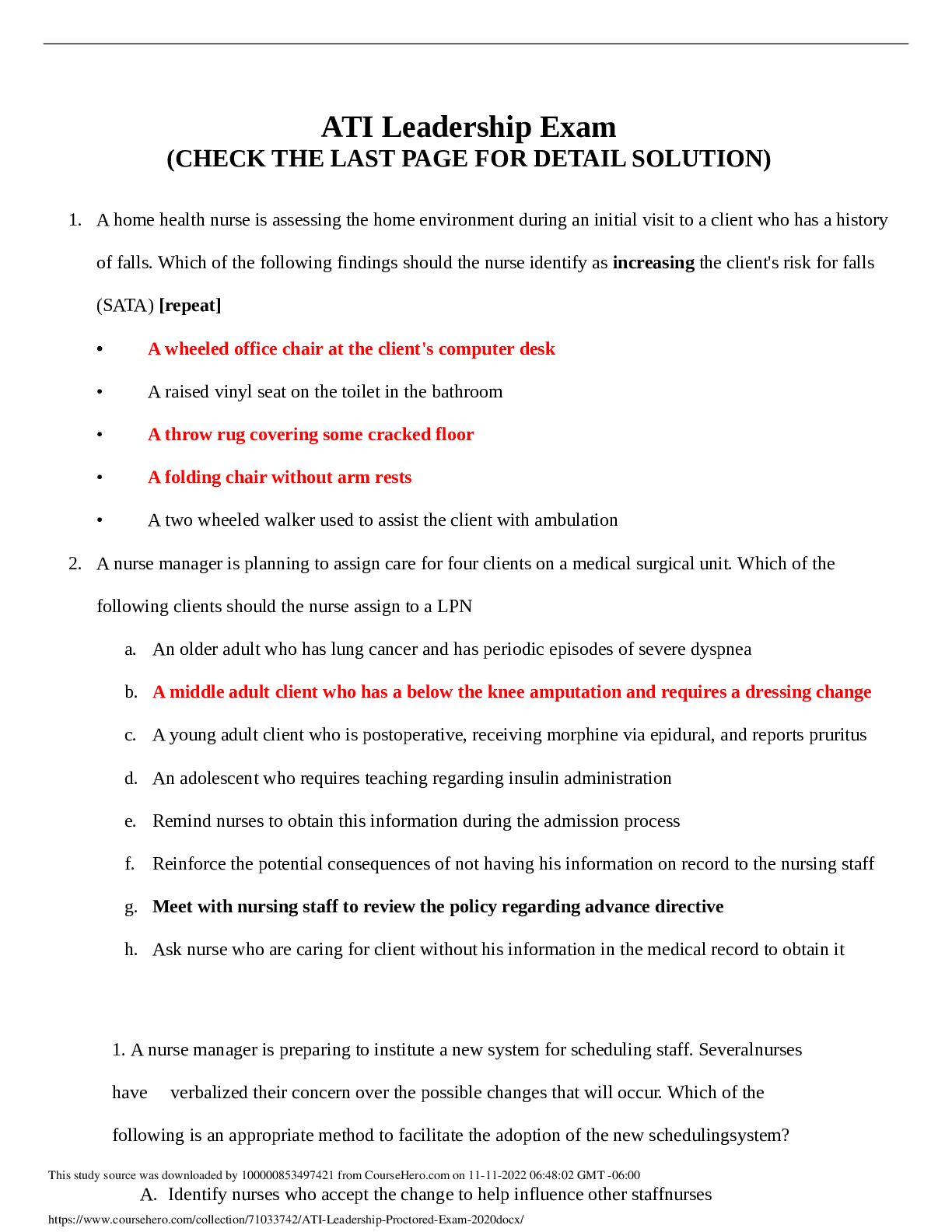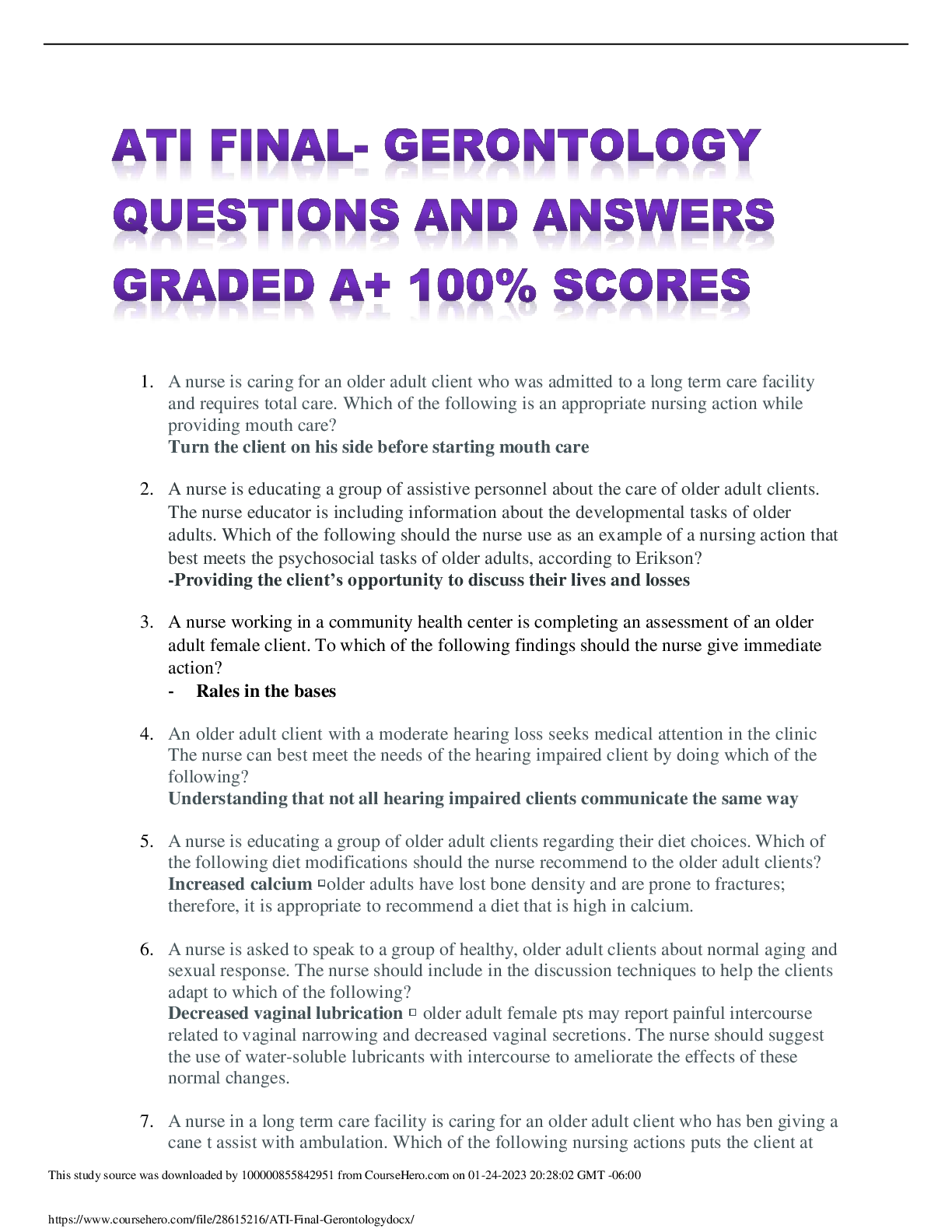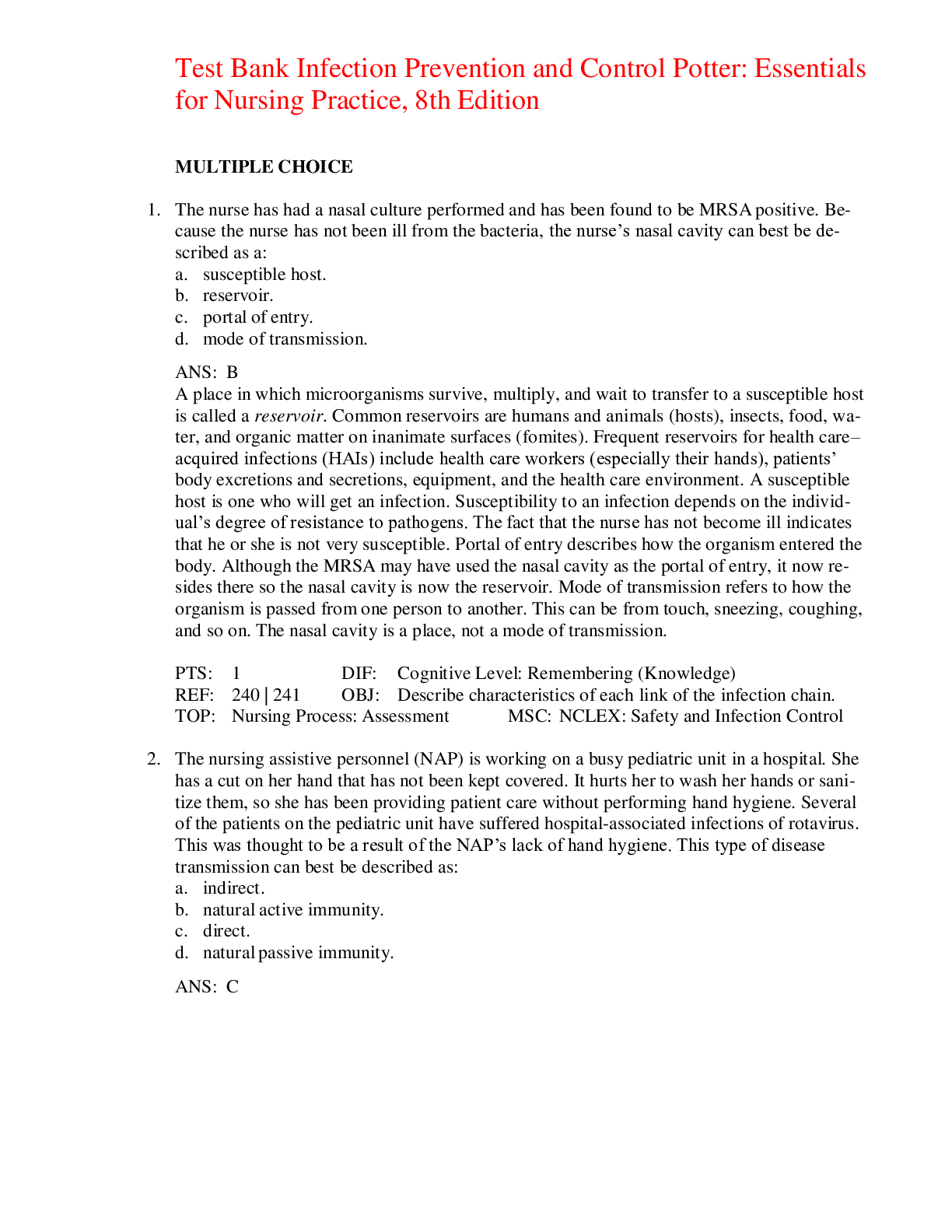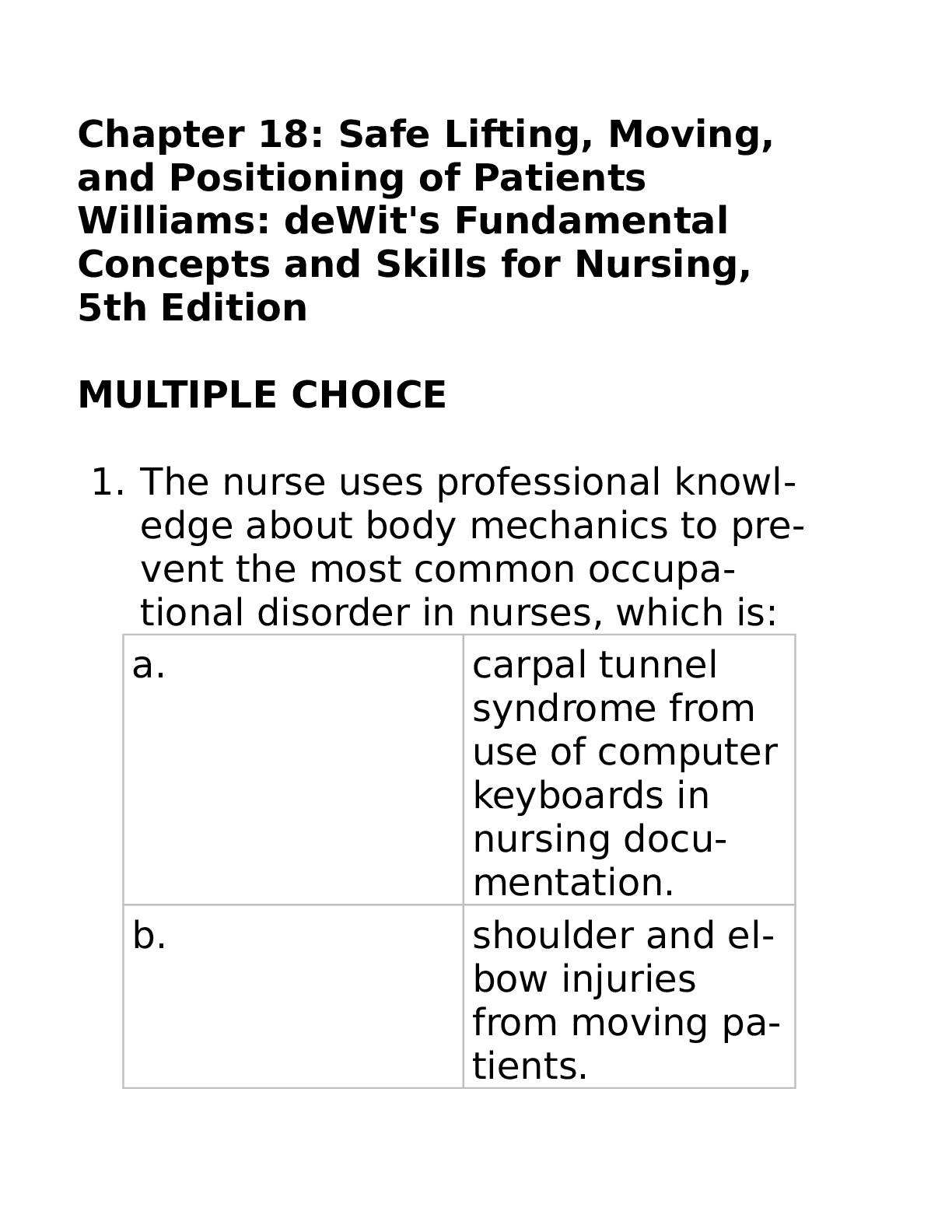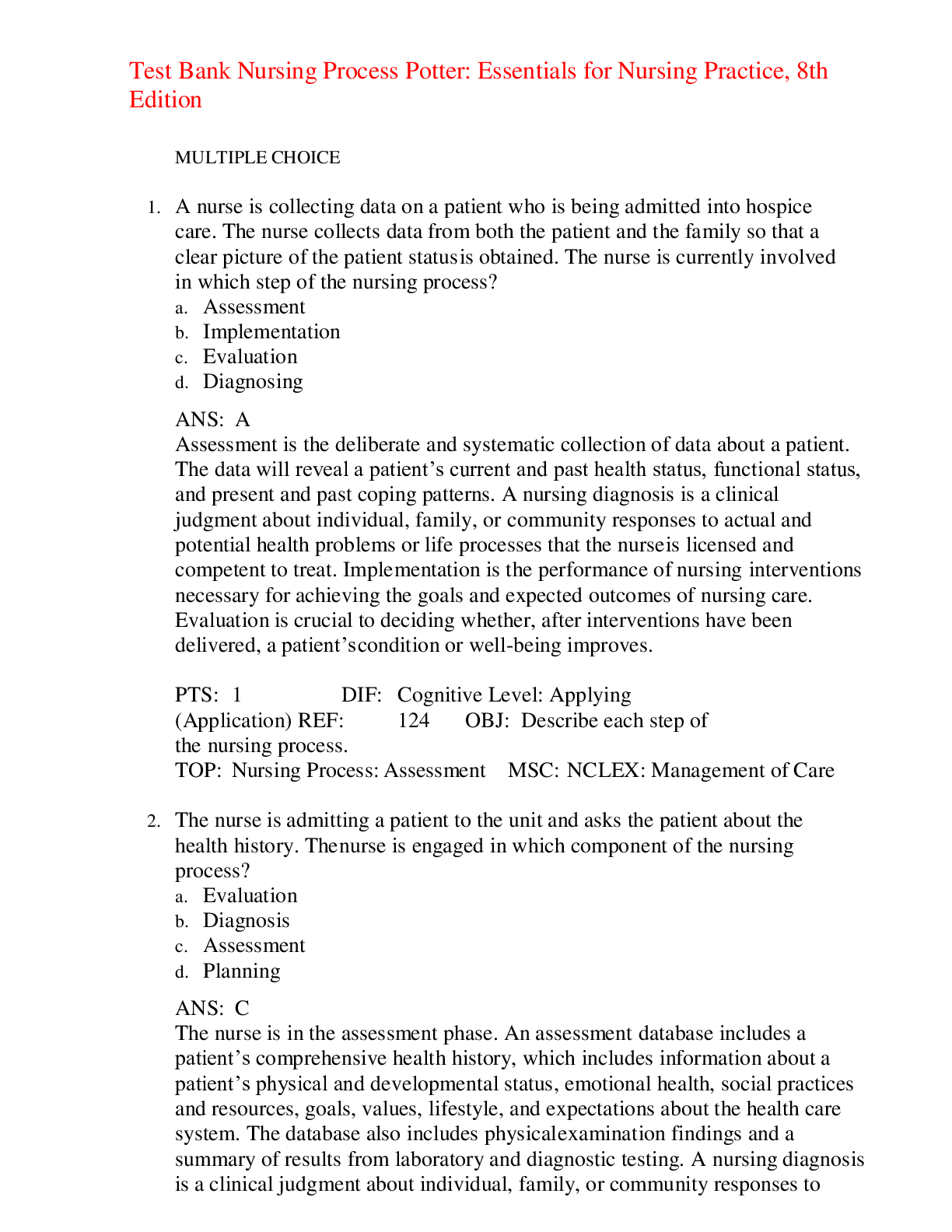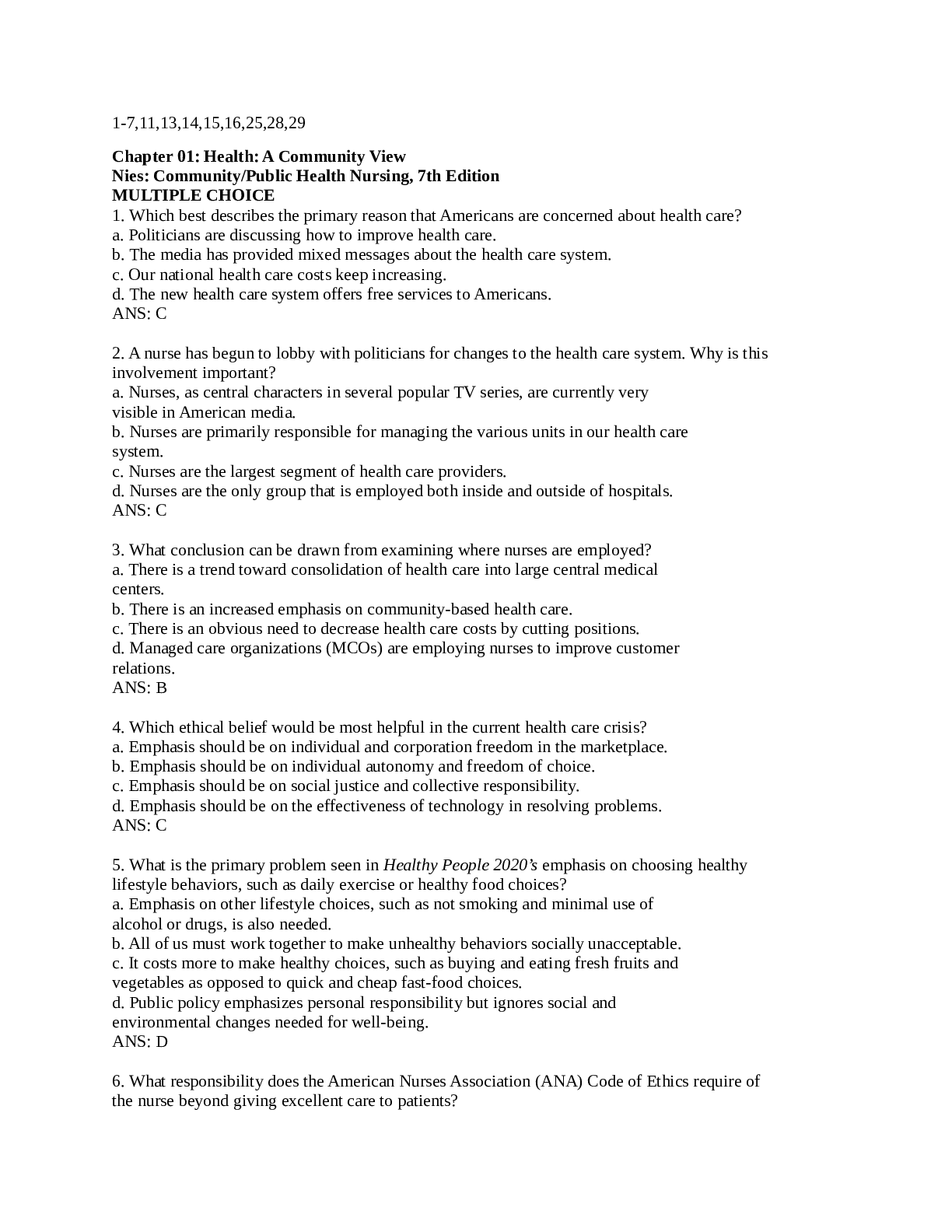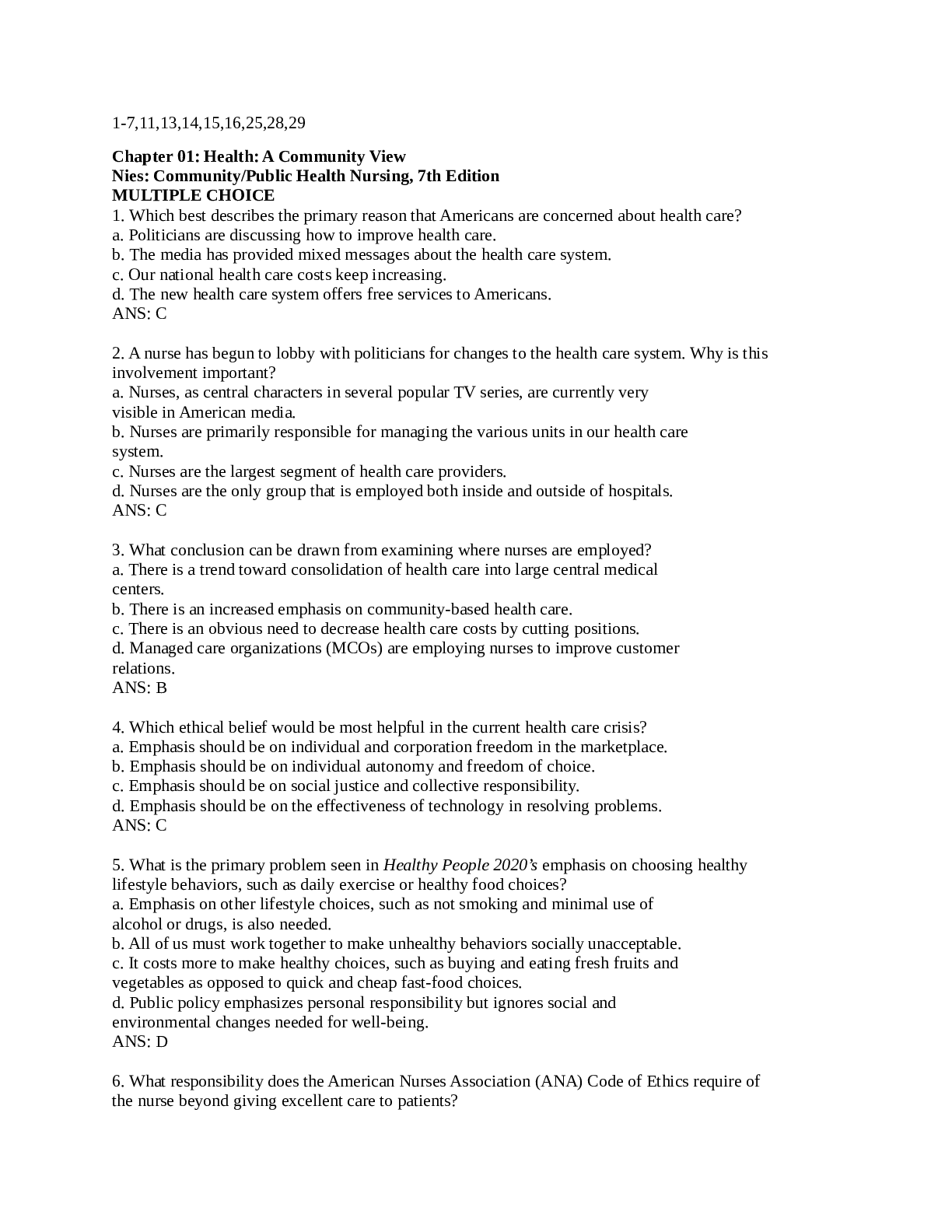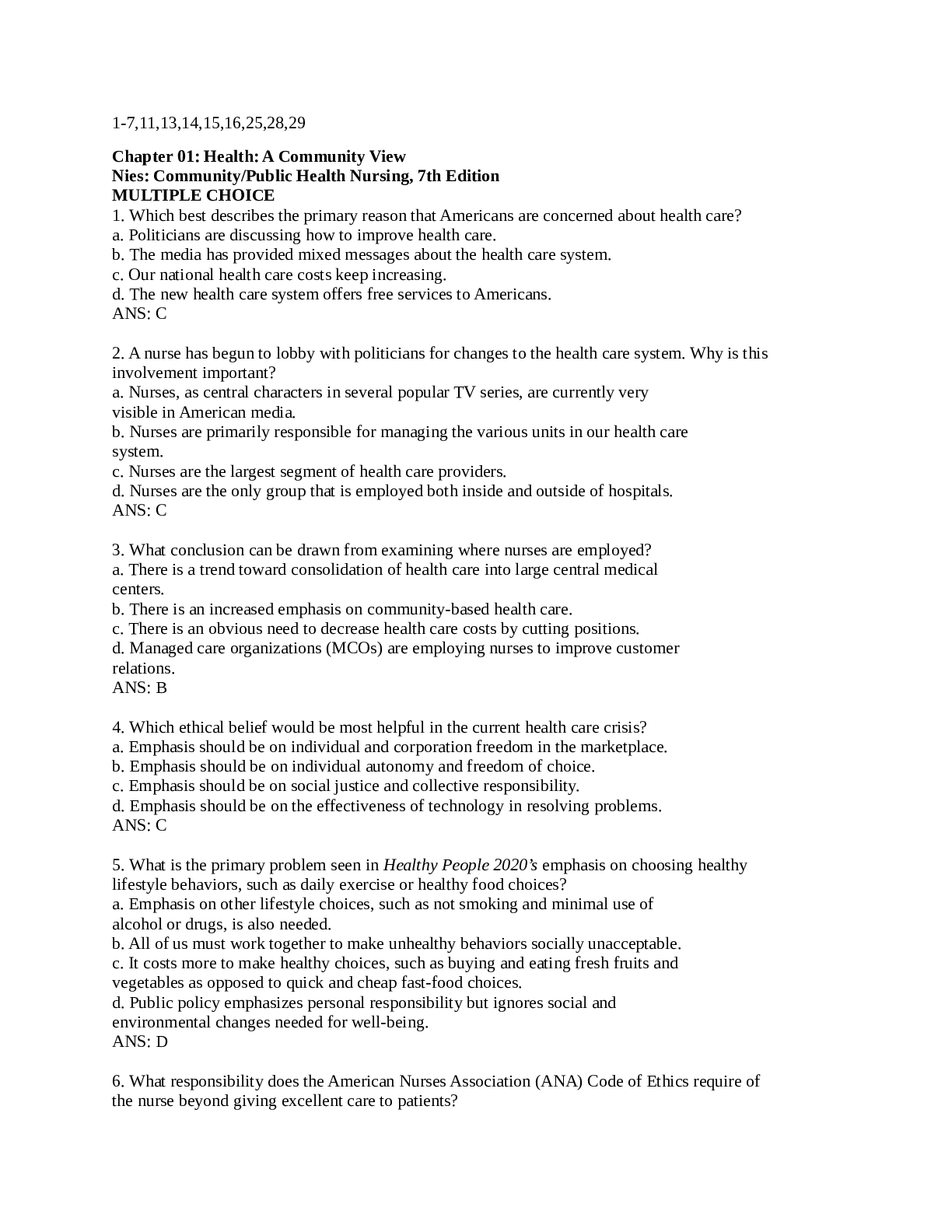*NURSING > EXAM PROCTORED > Chapter 21: Burns Sole: Introduction to Critical Care Nursing, 7th Edition (All)
Chapter 21: Burns Sole: Introduction to Critical Care Nursing, 7th Edition
Document Content and Description Below
Chapter 21: Burns Sole: Introduction to Critical Care Nursing, 7th Edition MULTIPLE CHOICE 1. The optimal measurement of intravascular fluid status during the immediate fluid resuscitation phase o... f burn treatment is a. blood urea nitrogen. b. daily weight. c. hourly intake and urine output. d. serum potassium. ANS: C During initial fluid resuscitation, urine output helps guide fluid resuscitation needs. Measuring hourly intake and output is most effective in determining the needs for additional fluid infusion than is urine output alone. Blood urea nitrogen may be used to monitor volume status, but it is affected by the hypermetabolic state seen after burns, so it is not the optimal measure of intravascular fluid status. Daily weight measures overall volume status, not just intravascular volume. Serum potassium is released with tissue damage and thus is not the optimum measure of intravascular fluid status. DIF: Cognitive Level: Remember/Knowledge REF: Box 21-1 OBJ: Discuss the primary and secondary survey assessments during resuscitation and the acute phases of burn management. TOP: Nursing Process Step: Assessment MSC: NCLEX Client Needs Category: Physiological Integrity 2. In patients with extensive burns, edema occurs in both burned and unburned areas because of a. catecholamine-induced vasoconstriction. b. decreased glomerular filtration. c. increased capillary permeability. d. loss of integument barrier. ANS: C Capillary permeability is altered in burns beyond the area of tissue damage, resulting in significant shift of proteins, fluid, and electrolytes resulting in edema (third-spacing). Catecholamine-induced vasoconstriction does not produce edema. Decreased glomerular filtration may cause fluid retention, but it is not responsible for the extensive edema seen after burn injury. Loss of integument barrier does not cause edema. DIF: Cognitive Level: Remember/Knowledge REF: p. 592 | Table 21-4 OBJ: Describe the pathophysiology of burns. TOP: Nursing Process Step: Evaluation MSC: NCLEX Client Needs Category: Physiological Integrity 3. Tissue damage from burn injury activates an inflammatory response that increases the patient’s risk for a. acute kidney injury. b. acute respiratory distress syndrome. c. infection. d. stress ulcers. ANS: C The loss of skin as the primary barrier against microorganisms and activation of the inflammatory response cascades results in immunosuppression, placing the patient at an increased risk of infection. A systemic inflammatory response syndrome (SIRS) also increases the risk of acute kidney injury in the presence of poor tissue perfusion. Acute respiratory distress syndrome is also a potential complication, but the risk of infection is greater because of the loss of the skin barrier. Catecholamine release and gastrointestinal ischemia are the causes of stress ulcers. DIF: Cognitive Level: Remember/Knowledge REF: pp. 593-594 OBJ: Describe the pathophysiology of burns. TOP: Nursing Process Step: Evaluation MSC: NCLEX Client Needs Category: Physiological Integrity 4. The nurse is caring for a burn-injured patient who weighs 154 pounds, and the burn injury covers 50% of his body surface area. The nurse calculates the fluid needs for the first 24 hours after a burn injury using a standard fluid resuscitation formula of 4 mL/kg/% burn of intravenous (IV) fluid for the first 24 hours. The nurse plans to administer what amount of fluid in the first 24 hours? a. 2800 mL b. 7000 mL c. 14 L d. 28 L ANS: C 154 pounds/2.2 = 70 kg 4 70 kg 50 = 14,000 mL, or 14 liters. DIF: Cognitive Level: Apply/Application REF: p. 603 | Box 21-1 OBJ: Formulate a plan of care for the patient with a burn injury. TOP: Nursing Process Step: Planning MSC: NCLEX Client Needs Category: Physiological Integrity 5. The nurse is caring for a patient who has circumferential full-thickness burns of his forearm. A priority in the plan of care is a. to keep the extremity in a dependent position. b. active or passive range-of-motion exercises every hour. c. to prepare for an escharotomy as a prophylactic measure. d. to splint the forearm. ANS: B [Show More]
Last updated: 2 years ago
Preview 1 out of 14 pages

Buy this document to get the full access instantly
Instant Download Access after purchase
Buy NowInstant download
We Accept:

Reviews( 0 )
$9.00
Can't find what you want? Try our AI powered Search
Document information
Connected school, study & course
About the document
Uploaded On
Jun 03, 2021
Number of pages
14
Written in
Additional information
This document has been written for:
Uploaded
Jun 03, 2021
Downloads
0
Views
46


.png)


